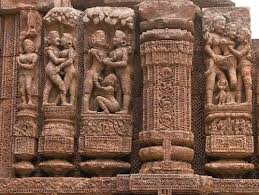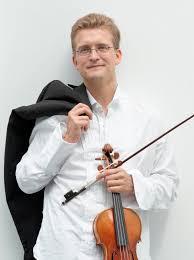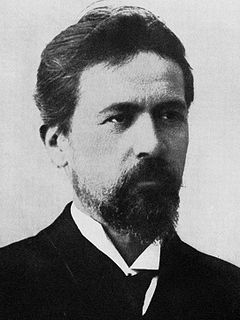April 9,2010
Grappling, booing, catcalls, cheers, lock ups, sleeper holds, a flying referee, take down, venus flytrap, countout, submission,sweat pouring down faces both on and off the ring! You are thinking of WWE RAW right? No, I wasn’t watching the WWE. I was at this true-to-life wrestling ring constructed for the Malcolm Tulip production of Claire Luckham’s play “Trafford Tanzi” at the Arthur Miller Theatre, replete with posters from the seventies and the dazzling blue lights as well as the seats arranged around the ring in true pro-wrestling style!
This play is about “Trafford Tanzi”, a girl who lives in a uncompromising and hard world where she is not allowed to pursue her dream of being a professional wrestler. It is all about how she fights (literally) her way through this. It is an interesting play where the struggles of a character are portrayed so clearly and yet subtly in a way that will make the audience feel exactly what the character feels. The essence of each character (the referee cum school psychiatrist, Platinum Sue, Tanzi’s Mum& Dad, Tanzi’s husband Dean Rebel) shows in the way each fights Tanzi. The wrestling is so important to this play. The actions speak and actually, the actors don’t really have too many lines (except for the comic and talented referee). The character’s internal conflicts are more clear and there isn’t much use of ambiguous complicated metaphors. This simplicity of showing the character’s emotions is unique and hats off to Claire Luckham for this! It is fascinating to think of life this way. Of course, this play reflects strong feminist views and Tanzi emerges the winner at the end.
As a part of the audience, you sit there and watch Tanzi getting pushed around and hit many times and when she ends as the winner, naturally you root for her. In this production, I didn’t watch a play. I was in one, watching a real fight. This ability to engage the audience completely is why Malcolm Tulip’ s production of “Trafford Tanzi” wins full points. This production has everything right. The physical element in this play is crucial to delivering its message and the actors under the tutelage of Charles Fairbanks, ( a filmmaker and wrestler who goes to the MFA program in Art and Design at Uof M) got this right! The audience were encouraged to be cheer or boo and if there had been beer, cigarette smoke and vendors with peanuts, we would have been in a real wrestling match! If one had walked in midway he/she would have assumed that it was a wrestling show. It was that good!
There were many scenes where I was extremely uncomfortable. For instance, the character Dean is in his briefs throughout the play. Even though we see a lot of nudity and of course tons of skin exposure on TV these days, this sudden encounter with a almost-naked actor felt so in-the-face and it was disconcerting initially. But I think this “costume” was quintessential to the definition of Dean’s character. The other costumes were so cleverly designed too. Tanzi’s mom wears pearls and apron over a tight swimsuit as if to show that she was a conforming shallow woman who knows that males are hypocrites but still basks under their attention.
The thuds from the numerous falls of the actors as they wrestle each other make you flinch and you want to jump up and see if the actor is alright. But then that is how the play was so realistic. The grossness quotient in this play was a lil high too. For instance scenes like a 1-year old Tanzi with her fingers full of boogers and up in her nose, like Dean pulling out hankies and flowers from his underwear- YUCK! . But this is what set the scenes where Tanzi is made to kiss the ground by her opponents apart. The hilarious (and disgusting) scenes along with the other semi-serious scenes infused realism and it seemed so genuine. I loved the fact that the actors all spoke (or as per Mr.Tulip, “tried to”) speak in pitch-perfect British accents. It added that little extra element of humor.
As for the music, Carlos Valdes was amazing. His covers for Gloria Gaynor’s”I will survive” and Beatles’ “I wanna hold your hand” were absolutely hilarious. His background score was cheeky, fun and brilliant! He has done a great job.I loved the referee’s acting (played by Torrey Wigfield). His frequent flamboyant entries like diving across the ring or in a cowboy outfit as well as his witty delivery was fun to watch. His rendition of the French song “non, je ne regretten rien” had the audience in splits. Dean Rebel, the character most booed in this play and played by Louis Marino who had to wear in a blue brief throughout, did a very confident job. His acrobatic skills and fluid movements were great too. The totally disgusting and obnoxious character of Tanzi’s Dad was portrayed perfectly by Nicholas Strauss-Matathia (his pronunciation of “buttercups” in that fake British accent had me cracking!). For this performance, the understudies Aimee Garcia and Charlotte Vaughn Raines performed the roles of Tanzi and Tanzi’s Mum respectively. Charlotte rocked the song “Stand by me” and Aimee gave a very strong performance too. The endearing (and as it turned out humorous) director Malcolm Tulip came out with the crew for the talk after the performance and this was so illuminating. This is definitely a great success for Mr. Tulip and his team.
I had read a preview for this play and the plot didn’t appeal to me. But somehow I ended up going to this play and trust me when I say this- it is one of the best all-round entertainment you can ever get. I had such a delightful time! You are entitled to one too.
Don’t forget to catch one of the following shows:
Saturday April 10 @ 8 pm or Sunday April 11 @ 2 pm @ Arthur Miller Theatre
tickets available at box office or online: http://www.music.umich.edu/performances_events/productions/09-10/trafford.htm
A delighted,
Krithika, for art[seen]











